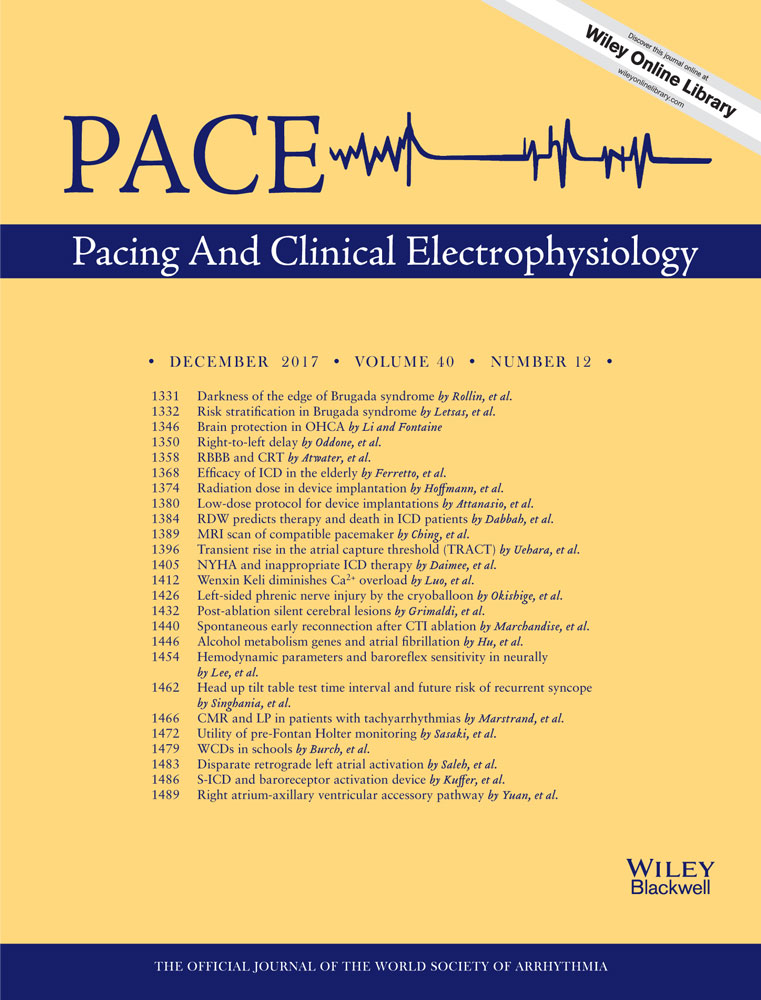Optimization of coronary sinus lead placement targeted to the longest right-to-left delay in patients undergoing cardiac resynchronization therapy: The Optimal Pacing SITE 2 (OPSITE 2) acute study and protocol
Abstract
Aims
Left ventricular (LV) lead positioning at the site of delayed electrical activation is associated with better response to cardiac resynchronization therapy (CRT). We hypothesized that a long electrical conduction delay between right ventricular (RV) and coronary sinus (CS) leads during RV pacing (RLD index) is correlated with a better clinical outcome
Methods and results
RLD is measured intraprocedurally, during RV pacing, as the time interval between the intracardiac electrograms of RV and CS leads. Initially, we did a prove-of-concept, feasibility, acute study in 97 patients who underwent CRT implantation. The CS lead position was assessed in the 40° right anterior oblique and 40° left anterior oblique views and assigned to one of 11 prespecified segments of a schematic eyeball depiction of the LV walls. Acute outcomes were QRS width during biventricular (BIV) pacing. The longest RLD were found in the basal and mid lateral segments; these accounted for 82% and 78%, respectively, of the total QRS width (%RLD). %RLD was inversely correlated with BIV-paced QRS (P = 0.0001). A similar slope was present either in the 78 patients with preserved atrioventricular (AV) conduction and in the 19 without AV conduction (− 0.34 vs − 0.27, P = 0.7).
Conclusion
We showed that RLD can be used to guide lead placement at the time of CRT implantation and that it is correlated with BIV-QRS width, an indirect predictor of clinical outcome. Based on these findings we started the prospective, multicenter Optimal Pacing SITE 2 (OPSITE 2) trial with the objective to demonstrate a relationship between RLD and clinical outcomes assessed as death, hospitalization for heart failure, New York Heart Association class, and clinical composite score. The protocol is provided.




